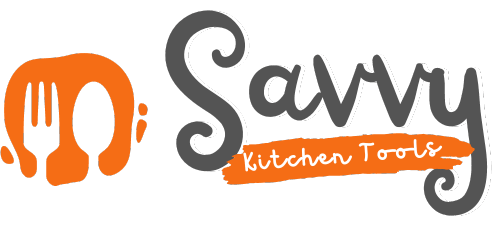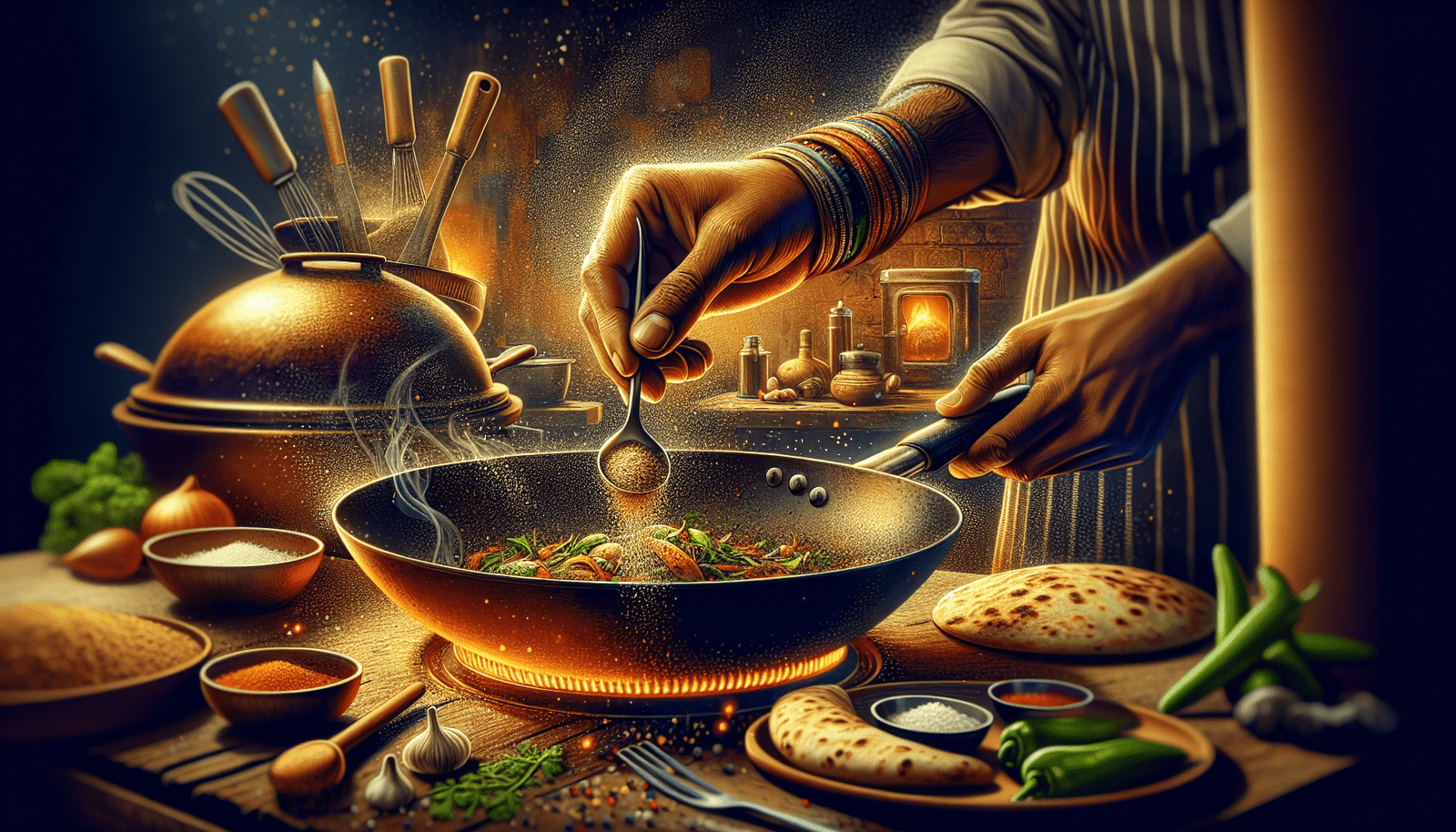In this article, you will discover 10 fascinating methods of cooking that will take your culinary skills to the next level. From traditional techniques to innovative approaches, you will explore a wide range of cooking methods that will help you create mouthwatering dishes. Whether you’re a seasoned chef or just getting started in the kitchen, these methods will inspire and challenge you to experiment with new flavors and techniques. So get ready to embark on a culinary adventure and discover the endless possibilities that await you in the world of cooking.
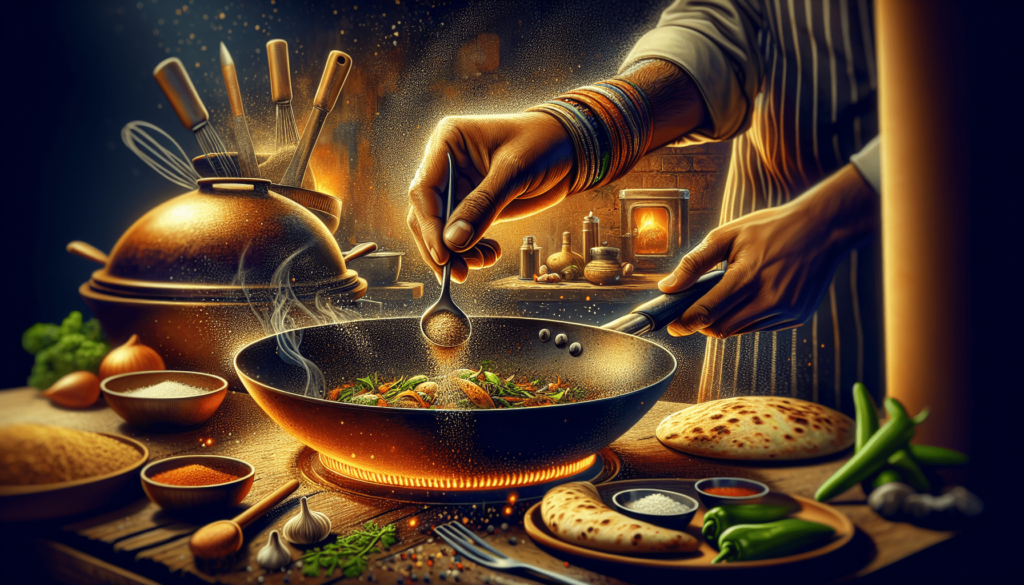
Boiling
Explanation of boiling as a cooking method
Boiling is a widely used cooking method that involves cooking food in water or other liquids at a temperature of 100 degrees Celsius (212 degrees Fahrenheit). This method utilizes the heat energy from the boiling liquid to cook the food evenly. Boiling is a simple and effective way of cooking various ingredients, as it helps to retain the nutrients and flavors of the food. It is commonly used for cooking vegetables, pasta, grains, and even proteins like eggs.
Equipment used for boiling
To successfully boil food, you’ll need a few essential tools. Firstly, a large pot with a tight-fitting lid is crucial for boiling large quantities of liquid and ingredients. This will help to prevent the water from evaporating too quickly and keep the heat trapped inside. A stovetop or a heat source such as a burner is necessary for generating the heat required for boiling. A heat-resistant spoon or tongs are handy for stirring the food and removing it from the boiling liquid safely. Lastly, a timer or clock will ensure that you don’t overcook or undercook the food.
Examples of dishes that are boiled
Boiling is a versatile cooking method that can be used to prepare a wide range of dishes. Some popular examples include:
- Boiled pasta: Whether it’s spaghetti, penne, or macaroni, boiling is the first step in preparing perfectly al dente pasta.
- Boiled vegetables: From carrots and broccoli to potatoes and green beans, boiling is a quick and healthy way to cook vegetables while preserving their nutrients.
- Boiled eggs: Boiling eggs until they are hard or soft-boiled is a classic method of cooking eggs, resulting in a versatile ingredient for various dishes.
- Boiled rice: Boiling rice in an appropriate amount of water until it becomes tender and fluffy is a staple cooking method in many cuisines.
- Boiled seafood: Shrimp, crab, lobster, and mussels are often boiled to perfection with flavorful seasonings for a delightful seafood feast.
Tips for successful boiling
To ensure successful boiling, here are a few tips to keep in mind:
- Use an appropriate amount of water to fully submerge the ingredients you’re boiling.
- Salt the boiling water for enhanced flavor absorption in the food.
- Keep an eye on the cooking time to avoid overcooking or undercooking the ingredients.
- Use a lid to cover the pot while boiling to retain heat and reduce cooking time.
- Test the doneness of the food by tasting or poking it with a fork to ensure it reaches the desired texture.
Grilling
Explanation of grilling as a cooking method
Grilling is a popular cooking method that involves cooking food directly over an open flame or high heat source. It is often associated with outdoor cooking, as it typically involves using a barbecue pit or grill. Grilling is a versatile technique that imparts a distinct smoky flavor and appealing char marks to the food. It is commonly used for cooking various meats, vegetables, and even fruits.
Different types of grills
There are several types of grills available, each offering a unique grilling experience:
- Charcoal grill: This traditional grill uses charcoal as the primary fuel source, providing an authentic smoky flavor to the food.
- Gas grill: Gas grills are convenient and easy to use, as they utilize propane or natural gas as the fuel source, offering precise temperature control.
- Electric grill: Ideal for indoor use, electric grills are powered by electricity and are perfect for those who don’t have access to an outdoor space.
- Pellet grill: These grills use hardwood pellets as the fuel source, offering a variety of wood flavors to infuse into the food.
- Kamado grill: Kamado-style grills are made from ceramic and have excellent heat retention, making them versatile for grilling, smoking, and even baking.
Examples of dishes that are grilled
Grilling is a fantastic method for adding a smoky and delicious touch to various types of food. Here are some examples:
- Grilled steak: Nothing beats the mouthwatering flavor and juicy tenderness of a perfectly grilled steak.
- Grilled vegetables: Vegetables such as peppers, zucchini, and eggplant develop a delightful char and smoky taste when grilled.
- Grilled chicken: Grilling chicken breasts, drumsticks, or wings results in crispy skin and juicy meat with smoky undertones.
- Grilled burgers: Burgers cooked on a grill acquire a delectable smoky flavor and appetizing grill marks.
- Grilled pineapple: Grilling pineapple slices brings out their natural sweetness and adds a caramelized touch to this tropical fruit.
Tips for successful grilling
To achieve great results when grilling, consider the following tips:
- Preheat the grill to ensure consistent cooking and to prevent food from sticking.
- Oil the grates before placing the food to prevent sticking and aid in creating appealing grill marks.
- Maintain a clean grill by regularly brushing the grates to remove any residue from previous cookouts.
- Use direct heat for thinner cuts of meat and vegetables that cook quickly and indirect heat for larger cuts that require slower cooking.
- Use a meat thermometer to ensure that meats reach the desired doneness without overcooking or undercooking.
Roasting
Explanation of roasting as a cooking method
Roasting is a dry heat cooking method that involves cooking food in an oven or over an open flame without the use of liquid. Unlike boiling or grilling, roasting relies on hot air circulating around the food to cook it evenly and create a crisp and flavorful exterior. Roasting is commonly used for meat, poultry, fish, and even vegetables.
Difference between roasting and baking
The terms “roasting” and “baking” are often interchangeable, but they do have slight differences. Roasting is generally used for cooking larger cuts of meat, whereas baking is used for smaller and more delicate food items like pastries and desserts. However, both methods involve dry heat and cooking in an enclosed space, such as an oven.
Examples of dishes that are roasted
Roasting is a versatile cooking technique that can transform various ingredients into mouthwatering dishes. Here are a few examples:
- Roast chicken: A classic Sunday roast, roasting a whole chicken with herbs and seasonings results in tender meat with a crispy skin.
- Roasted vegetables: From roasted potatoes and carrots to brussels sprouts and butternut squash, roasting brings out the natural sweetness and enhances the flavors of vegetables.
- Roast beef: Slow-roasting a beef roast marinated with spices and herbs creates a succulent dish that is perfect for special occasions or holiday meals.
- Roasted fish: Whole fish or fillets can be roasted with aromatic herbs and lemon, resulting in moist and flavorful seafood entrées.
- Roasted nuts: Nuts like almonds, cashews, and pecans can be roasted in the oven to intensify their nutty flavors and add a crunchy texture.
Tips for successful roasting
To ensure successful roasting, consider the following tips:
- Preheat the oven to the desired temperature before placing the food inside to promote even cooking.
- Use a roasting rack or elevate the food on a bed of vegetables to allow heat circulation and prevent the food from sitting in its juices.
- Baste the food with marinades, oils, or juices during the roasting process to add moisture and enhance flavors.
- Use a meat thermometer to monitor the internal temperature of roasts or large cuts of meat to ensure they are cooked to the desired level of doneness.
- Let the roasted food rest for a few minutes before carving or serving to allow the juices to redistribute and ensure maximum tenderness.
Baking
Explanation of baking as a cooking method
Baking is a dry heat cooking method that is primarily used for cooking pastries, bread, cakes, and other baked goods. It involves cooking food in an enclosed space, such as an oven, using hot air circulation. Baking relies on precise temperature control and chemical reactions between ingredients to create a range of delicious and fluffy treats.
Difference between baking and roasting
While both cooking methods involve dry heat and cooking in an enclosed space, baking and roasting have distinct differences. Baking is typically used for smaller and more delicate food items, such as pastries and desserts, while roasting is commonly used for larger cuts of meat and vegetables. Baking also often involves the use of baking powder or baking soda, which creates a chemical reaction that helps the food rise.
Equipment used for baking
To successfully bake food, you’ll need a few essential tools. Firstly, an oven is necessary for providing the controlled heat required for baking. Baking sheets or pans are used to hold the food, such as cookies, cakes, or pastries, while they are in the oven. Mixing bowls, measuring cups, and spoons are essential for accurately measuring and combining ingredients. Additionally, a whisk or wooden spoon is handy for mixing batters, while a rubber spatula helps to scrape every bit of batter from the bowl.
Examples of dishes that are baked
Baking is a versatile cooking method that produces a wide range of delectable treats. Here are some examples:
- Baked cookies: Chocolate chip cookies, oatmeal cookies, and sugar cookies are just a few of the countless cookie variations that can be baked to perfection.
- Baked bread: From crusty baguettes and soft sandwich loaves to artisanal sourdough, baking bread yields heavenly aromas and delicious textures.
- Baked cakes: Classic birthday cakes, rich chocolate cakes, and fluffy sponge cakes are just a few examples of the many delightful cakes that can be baked.
- Baked quiches: Quiches filled with savory ingredients like cheese, vegetables, and meats are baked to create a golden crust and luscious filling.
- Baked pastries: Flaky croissants, buttery puff pastry, and sweet fruit turnovers are all examples of delicious pastries that are baked to perfection.
Tips for successful baking
To achieve consistently great results when baking, consider the following tips:
- Preheat the oven to the specified temperature to ensure even baking.
- Measure ingredients accurately to maintain the balance of flavors and textures in the final product.
- Use the correct size baking dish or pan specified in the recipe to ensure proper heat distribution.
- Rotate the baking pans halfway through the baking time to promote even browning and prevent hot spots in the oven.
- Check for doneness by inserting a toothpick or cake tester into the center of the baked item to see if it comes out clean or with a few crumbs.
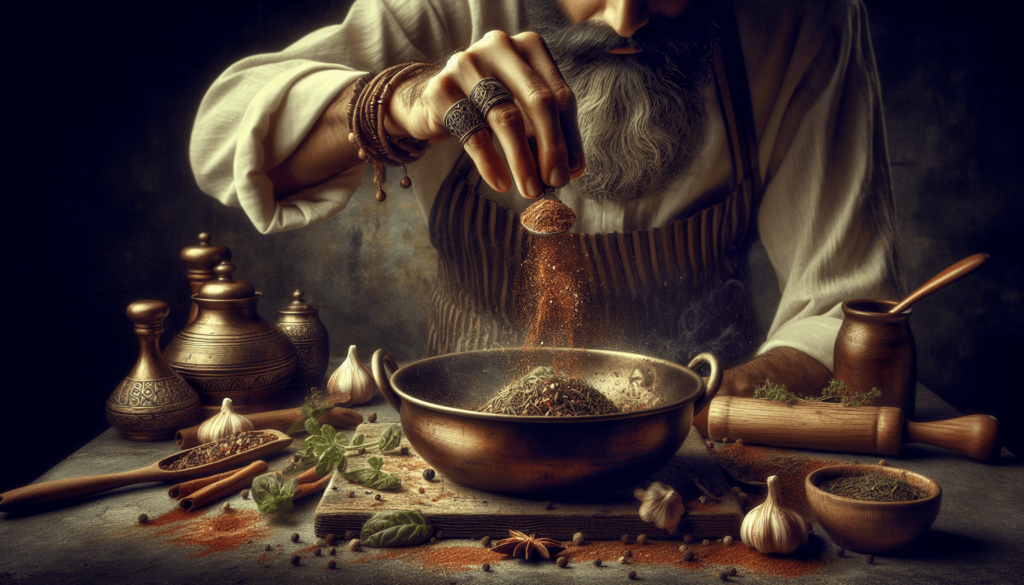
Frying
Explanation of frying as a cooking method
Frying is a cooking method that involves cooking food in hot oil or fat. The intense heat of the oil or fat quickly cooks the food, creating a crispy and flavorful exterior while sealing in the juices. Frying is a versatile technique used for a wide range of food, including meats, vegetables, and even desserts.
Different types of frying (e.g., deep frying, stir-frying)
There are various types of frying methods, each requiring a different approach:
- Deep frying: Deep frying involves fully submerging the food in hot oil, allowing it to cook evenly and develop a crispy exterior. This method is commonly used for items like French fries, chicken wings, and donuts.
- Stir-frying: Stir-frying is a quick and high-heat method where food is cooked in a small amount of oil in a wok or skillet. This technique is prominent in Asian cuisine, creating dishes like stir-fried vegetables, noodles, and rice.
- Pan frying: Pan frying involves cooking food in a moderate amount of oil/fat in a skillet or frying pan. It is suitable for foods that need to be cooked on both sides, such as fish fillets, pork chops, or breaded chicken cutlets.
- Shallow frying: Shallow frying is similar to pan frying but uses a larger amount of oil/fat. This method is ideal for preparing foods like schnitzels, croquettes, or pancakes.
Examples of dishes that are fried
Frying is a popular cooking method that results in irresistibly crispy and flavorful dishes. Here are some examples:
- Fried chicken: A beloved classic, fried chicken is known for its crispy coating and tender meat.
- French fries: Crispy and golden fries are a favorite accompaniment to burgers, hotdogs, or enjoyed on their own.
- Tempura: Tempura is a Japanese dish consisting of lightly battered and deep-fried seafood, vegetables, or even fruits.
- Stir-fried noodles: A staple in Asian cuisine, stir-frying noodles with vegetables, meat, and sauces creates a satisfying and quick meal.
- Churros: These delightful Spanish pastries are made by frying dough until golden brown and then coating them in cinnamon sugar.
Tips for successful frying
To achieve successful frying and ensure your dishes come out perfectly crisp and delicious, follow these tips:
- Use oil with a high smoke point, such as vegetable oil or peanut oil, to prevent the oil from burning during frying.
- Preheat the oil to the correct temperature before adding the food to ensure even cooking and crispy results.
- Fry in small batches to maintain the desired oil temperature and prevent overcrowding, which can lead to uneven cooking.
- Drain fried food on a paper towel-lined plate or wire rack to remove excess oil and maintain the crispiness.
- Dispose of used oil properly by allowing it to cool and then transferring it to a container for recycling or disposal at a designated facility.
Steaming
Explanation of steaming as a cooking method
Steaming is a gentle and healthy cooking method that involves cooking food by allowing steam to heat it. This technique is achieved by placing the food in a steamer or in a covered container over simmering water, which generates steam that cooks the food evenly. Steaming helps to retain the food’s natural flavors, colors, and nutrients, making it an excellent choice for a variety of dishes.
Equipment used for steaming
To steam food effectively, you’ll need specific equipment designed for this cooking method. Here are some essential tools:
- Steamer basket: A steamer basket is a versatile tool that allows you to steam a variety of ingredients, from vegetables and dumplings to fish and poultry. It is typically made of stainless steel or bamboo and fits inside a pot or wok.
- Steamer pot or wok: A dedicated steamer pot or a deep wok with a lid is essential for generating steam and enclosing the food as it cooks.
- Lidded containers: If you don’t have a steamer basket, you can use lidded heatproof containers, such as ovenproof glass bowls or microwave-safe dishes, to steam food.
- Rack or trivet: Placing a heatproof rack or trivet at the bottom of the pot or wok helps elevate the food above the water, allowing steam to circulate freely and avoiding direct contact with the liquid.
Examples of dishes that are steamed
Steaming is a popular cooking method in many cuisines and is suitable for various types of food. Here are some examples:
- Steamed vegetables: Steaming preserves the flavors, textures, and vibrant colors of vegetables like broccoli, carrots, and asparagus while making them tender and crisp.
- Steamed fish: Steaming fish with aromatic herbs, spices, and soy sauce results in delicate, moist, and flavorful fish fillets.
- Dim sum: This traditional Chinese cuisine consists of various steamed treats like dumplings, buns, and rice rolls filled with a variety of ingredients.
- Steamed rice: Steaming rice is a common method that yields fluffy, separate grains without the need for constantly monitoring the cooking process.
- Steamed puddings: Classic desserts like sticky toffee pudding or steamed sponge cake are made by steaming a batter until it transforms into a moist and indulgent treat.
Tips for successful steaming
To achieve successful steaming and ensure your dishes come out perfectly cooked and full of flavor, consider the following tips:
- Add flavor to the steaming liquid by using aromatic ingredients like herbs, garlic, ginger, or citrus zest to infuse the food with delightful flavors.
- Arrange the ingredients in a single layer or in a flat layer to ensure even cooking throughout the dish.
- Avoid opening the lid frequently during the steaming process, as this can cause a loss of steam and affect the cooking time.
- Test the doneness of the food by inserting a knife or skewer into the thickest part to see if it comes out hot and tender.
- Allow steamed food to rest briefly after cooking to redistribute any juices and enhance the flavors before serving.
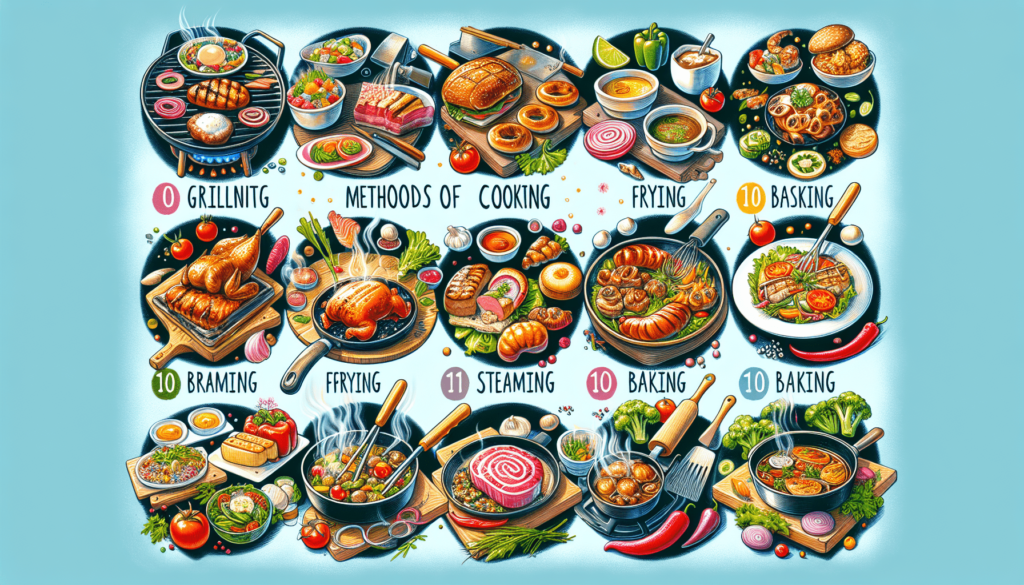
Sautéing
Explanation of sautéing as a cooking method
Sautéing is a quick and versatile cooking technique that involves cooking food in a small amount of fat over high heat. The high heat and fast cooking time create delicious textures by browning the food quickly and locking in flavors. Sautéing is commonly used for meats, vegetables, and even aromatic ingredients like onions and garlic.
Difference between sautéing and frying
While sautéing and frying both involve cooking food in fat over heat, there are some differences between the two methods. Sautéing typically uses less fat and involves cooking food quickly over high heat, whereas frying often involves cooking food more slowly and in a larger amount of fat for a longer period of time. Sautéing aims to brown the food quickly while maintaining its texture and tenderness.
Examples of dishes that are sautéed
Sautéing is a popular cooking method that adds rich flavors and appealing textures to various dishes. Here are some examples:
- Sautéed chicken breasts: Sautéing thinly sliced chicken breasts in a skillet with a touch of butter or oil creates golden-brown, tender, and flavorful meat.
- Sautéed mushrooms: Mushrooms sautéed in butter or oil develop a savory and earthy flavor, making them a perfect addition to pasta, steaks, or salads.
- Sautéed vegetables: Sautéing vegetables like bell peppers, zucchini, or green beans intensifies their flavors while retaining a satisfying crunch.
- Sautéed shrimp: Cooking shrimp quickly in a pan with garlic and butter creates a succulent and delicious seafood dish.
- Sautéed garlic and onions: Sautéing aromatic ingredients like garlic and onions in oil or butter forms the flavorful base for many recipes, from sauces to soups.
Tips for successful sautéing
To achieve successful sautéing and ensure your dishes come out beautifully cooked and full of flavor, consider the following tips:
- Use a skillet or sauté pan with a wide bottom and low sides to provide ample space for the food to evenly cook and brown.
- Heat the skillet over medium-high to high heat and allow it to become hot before adding the fat and food.
- Cut the ingredients into similar-sized pieces for even cooking, and ensure they are dry before adding them to the pan to avoid steaming instead of sautéing.
- Avoid overcrowding the pan, as this can cause the food to steam rather than brown. Cook in batches if necessary.
- Stir or toss the food frequently using tongs or a spatula to ensure even browning and cooking.
Stewing
Explanation of stewing as a cooking method
Stewing is a slow-cooking method that involves simmering food in liquid for an extended period, resulting in tender and flavorful dishes. This technique typically uses moist heat and is ideal for tougher cuts of meat, vegetables, and legumes. Stewing allows the flavors to meld together while tenderizing the ingredients.
Equipment used for stewing
To successfully prepare stews, you’ll need a few essential tools. Here are some key items:
- Dutch oven or stockpot: A large, heavy-bottomed pot with a tight-fitting lid is ideal for stewing, as it can evenly distribute heat and retain moisture.
- Wooden spoon: A long-handled wooden spoon is perfect for stirring and combining the ingredients while protecting the pot’s surface.
- Tongs: Tongs are handy for turning and removing pieces of meat or vegetables without piercing or breaking them.
- Chef’s knife: A sharp chef’s knife will make it easier to prepare and chop the ingredients for your stew.
- Cutting board: A sturdy cutting board provides a stable surface for chopping and preparing the ingredients.
Examples of dishes that are stewed
Stewing is a versatile cooking method that can transform tough cuts of meat and simple ingredients into flavorful and hearty dishes. Here are some examples:
- Beef stew: This classic dish includes slow-cooked beef chunks with vegetables, herbs, and spices in a savory broth.
- Chicken casserole: Stewing chicken pieces along with vegetables, potatoes, and aromatic seasonings creates a comforting and satisfying meal.
- Vegetable curry: A vegetarian option, vegetable curry stews a medley of vegetables in a fragrant and spiced broth, resulting in a flavorful dish.
- Lamb tagine: This traditional North African dish slow-cooks tender lamb with a blend of spices, dried fruits, and vegetables, creating an aromatic and rich stew.
- Ratatouille: Ratatouille combines stewed summer vegetables like eggplant, zucchini, bell peppers, and tomatoes into a savory dish that captures the flavors of the Mediterranean.
Tips for successful stewing
To achieve successful stewing and ensure your dishes come out tender and packed with flavors, consider the following tips:
- Brown the meat before stewing to enhance the flavor and color. This step adds complexity to the dish by creating a rich caramelized exterior.
- Cut the ingredients into similar-sized pieces to ensure even cooking and to avoid overcooking smaller items.
- Use a flavorful liquid, such as broth, wine, or a combination of both, to enhance the taste of the stew.
- Low and slow cooking is key. Simmer the stew on low heat and be patient, allowing the ingredients to tenderize and the flavors to meld together.
- Taste and adjust the seasoning before serving, as the long cooking process can mellow the flavors. Add herbs, spices, or salt as needed to achieve the desired taste.
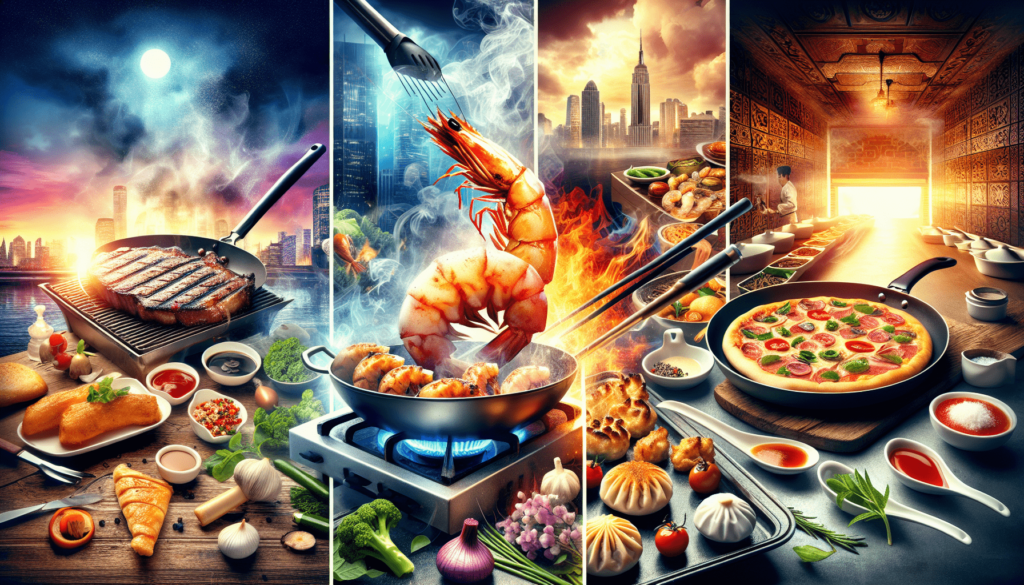
Poaching
Explanation of poaching as a cooking method
Poaching is a gentle, moist cooking method that involves cooking food in liquid at a temperature just below boiling point. The low heat allows the food to cook slowly, resulting in tender and delicate textures. Poaching is commonly used for delicate ingredients such as eggs, fish, poultry, and fruits.
Equipment used for poaching
To successfully poach food, you’ll need a few essential tools. Here are some key items:
- Deep saucepan: A deep saucepan is ideal for poaching, as it allows enough room for the liquid and ingredients.
- Slotted spoon: A slotted spoon helps to remove delicate items from the poaching liquid without disturbing them or causing them to break apart.
- Cheesecloth or infuser: Cheesecloth or an infuser can be used to hold and contain herbs, spices, or aromatics during the poaching process, allowing their flavors to infuse into the liquid.
- Fish spatula: A fish spatula, with its thin and flexible design, is useful for delicately lifting and transferring poached fish or other fragile ingredients from the poaching liquid.
Examples of dishes that are poached
Poaching is a cooking method often employed to create tender and flavorful dishes. Here are some examples:
- Poached eggs: A breakfast staple, poached eggs are cooked in gently simmering water until the whites are set and the yolks remain runny.
- Poached salmon: Poaching salmon in a flavorful broth helps to maintain its delicate texture while infusing it with aromatic flavors.
- Poached pears: Pears cooked in a sweet spiced liquid become tender and absorb the flavors of the poaching liquid, resulting in a delicious dessert.
- Poached chicken: By simmering chicken in aromatic broth or stock, it becomes moist and flavorsome, making it perfect for salads, sandwiches, or soups.
- Poached shrimp: Shrimp can be poached in court-bouillon or a flavorful liquid, resulting in succulent and mouthwatering seafood.
Tips for successful poaching
To achieve successful poaching and ensure your dishes come out tender and full of flavor, consider the following tips:
- Choose a poaching liquid that complements the flavors of the food you’re cooking. Broth, stock, wine, or a combination of these can add richness and depth to the dish.
- Keep the poaching liquid at a gentle simmer, just below boiling point, to ensure even cooking and prevent the food from becoming overcooked or tough.
- Add aromatics such as herbs, spices, or citrus slices to the poaching liquid to infuse the food with additional flavors.
- Monitor the poaching time carefully to ensure that the food is neither undercooked nor overcooked.
- Once the poaching is complete, gently remove the food from the liquid using a slotted spoon or fish spatula to avoid breakage or falling apart.
Microwaving
Explanation of microwaving as a cooking method
Microwaving is a fast and convenient cooking method that uses microwave radiation to heat and cook food. Microwaves cause water molecules in the food to vibrate, generating heat and cooking the food from within. This technique is commonly used for reheating leftovers, defrosting frozen food, and even cooking certain dishes from scratch.
Benefits and drawbacks of microwaving
Microwaving offers several benefits and drawbacks compared to other cooking methods:
Benefits:
- Speed: Microwaving is significantly faster than traditional cooking methods, allowing you to prepare meals in minutes rather than hours.
- Convenience: Microwaving is incredibly convenient, as it requires minimal preparation and reduces the need for additional pots and pans.
- Retention of nutrients: Microwaving tends to preserve more nutrients in food compared to other cooking methods, as the cooking time is shorter and there is less exposure to heat.
- Energy-efficient: Microwaving consumes less energy compared to stovetop or oven cooking, making it a more environmentally friendly option.
Drawbacks:
- Uneven cooking: Microwaves distribute heat unevenly in food, resulting in potential cold spots or unevenly cooked sections.
- Limited browning or crisping: Microwaves do not generate the same level of heat required for browning or crisping, resulting in dishes that may lack the desired texture or color.
- Texture alteration: Some foods, like bread or pastries, can become soggy or lose their crispness when microwaved.
- Limited cooking options: Microwaving is not suitable for all types of food, particularly those that require a specific cooking technique or advanced culinary skills.
Examples of dishes that can be microwaved
While not all dishes are suitable for microwaving, many can be prepared or reheated using this method. Here are some examples:
- Microwaved oatmeal: Prepare a quick and nutritious breakfast by microwaving oats, milk, and toppings like fruits, nuts, and honey.
- Microwaved potatoes: Speed up the cooking time for potatoes by microwaving them until tender, then finish them off with your preferred toppings.
- Microwaved steamed vegetables: Place vegetables and a small amount of water in a microwave-safe dish, cover, and microwave until tender, resulting in quick and healthy steamed veggies.
- Microwaved frozen dinners: Convenient microwaveable frozen dinners provide a quick and easy meal option when time is limited.
- Microwaved mug cakes: Whip up a single-serving cake by combining ingredients like flour, sugar, eggs, and flavorings in a microwave-safe mug, then microwave until cooked.
Tips for successful microwaving
To achieve successful microwaving and ensure your dishes come out cooked and delicious, consider the following tips:
- Use microwave-safe containers and covers that are heat-resistant and won’t warp or crack during the cooking process.
- Stir or rotate the food at regular intervals to promote even cooking and prevent any cold spots from forming.
- Always follow the recommended cooking times and power levels specified in the recipe or the microwave’s instruction manual.
- Allow the food to stand for a short period after microwaving to allow heat to distribute evenly within the dish.
- Be cautious when removing food from the microwave, as dishes and containers can become hot. Use oven mitts or pot holders to handle hot items.
